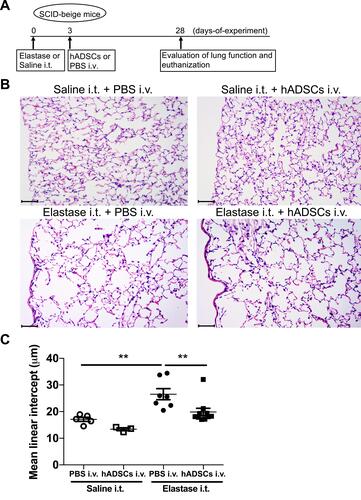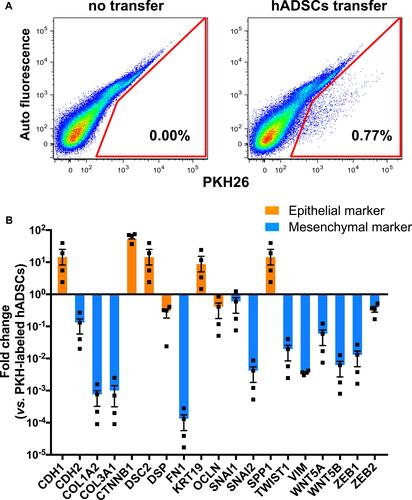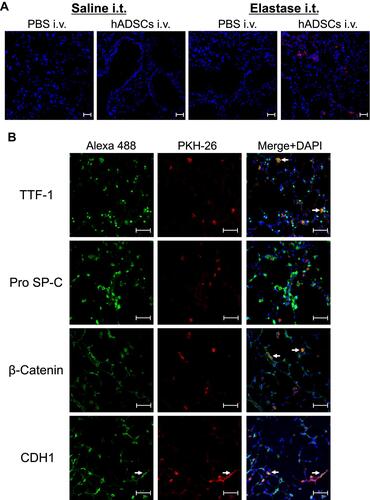Figures & data
Figure 1 hADSCs suppress elastase-mediated lung histological changes in SCID-beige mice.

Figure 2 Lung function of emphysema mice treated with hADSCs.

Figure 3 Gene expression of epithelial and mesenchymal genes in hADSCs isolated from lungs.

Figure 4 Fluorescence staining of epithelial markers in the lungs.

